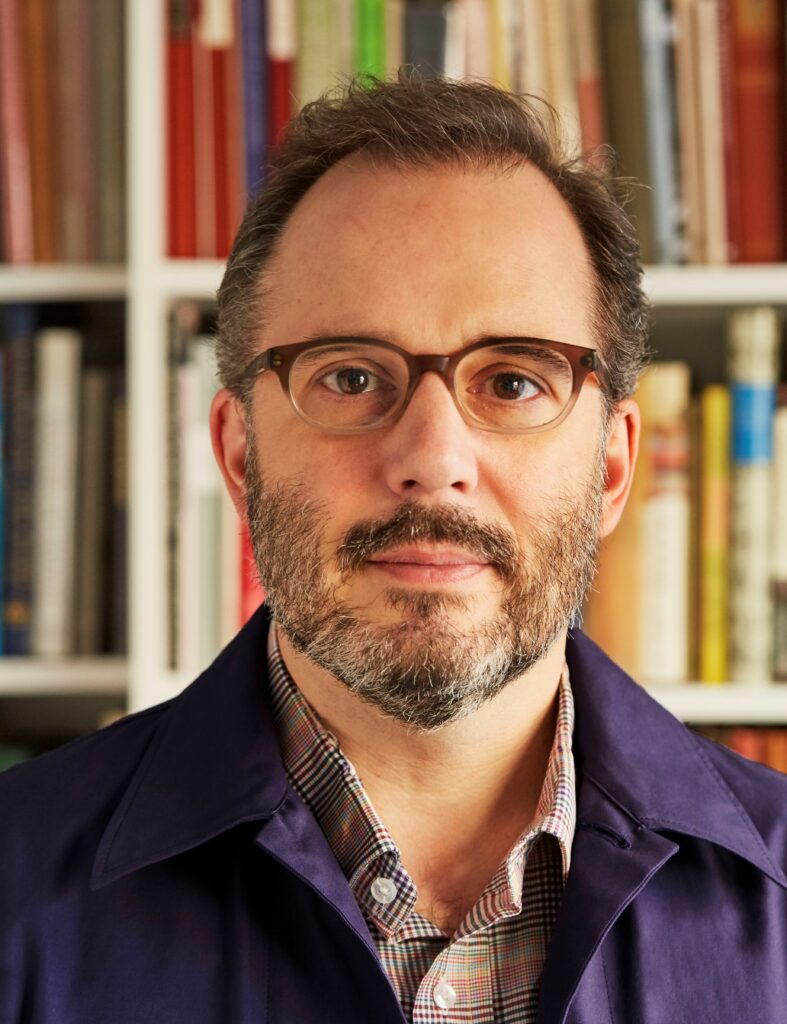Russell Maret. Photo: Annie Schlechter.
This is a guest post by Russell Maret, a book artist, type designer and private-press printer working in New York City. It first appeared in the Library of Congress Magazine.
Two of the earliest-known pieces of European printing made with moveable metal type are an indulgence — a promissory note granting its holder a shorter stay in purgatory in exchange for a small fee — and the Gutenberg Bible, widely considered one of the most beautiful books ever printed. (The Library’s copy is one of three perfect vellum copies known to exist.)
These two objects describe the outer limits of what we now call the book arts, an amorphous field populated by printers, papermakers, type designers, engravers and bookbinders; craftspeople who spend their lives reckoning with their materials, trying to find some middle ground between Gutenberg’s lofty heights and the more ephemeral objects of commerce.
Like any creative field, each branch of the book arts is characterized by a kind of alchemical awe, that out of these base materials of paper, lead and ink we can make something that is greater than the sum of its parts. To print is literally to transform a blank piece of paper into a messenger of ideas, and it is a permanent transformation.
That last bit is one of the trickier aspects of printing to navigate — its permanence. It is why we are so careful about committing thoughts to paper, and why opponents of ideas are so determined to prevent their being printed or distributed (The Tyndale Bible, “Ulysses,” etc). But even permanence is relative, in as much as the permanence of an idea is subject to the shifting interpretations of time (The earth is the center of the universe!). And books, as we all know, can be burned.
In my experience, the transformational power of print is not only technical, it is existential. In 1989, I inked up a printing press and pulled a proof for the first time. I was 18 years old, and in that instant I changed from a dreamy kid who had never worked with his hands into a determined apprentice. Printing was literally the first thing I ever wanted to do and now, over 30 years later, I am still determined to do it better.
Then, in 1996 I had a sudden vision for the design of a typeface, having never studied type design or calligraphy before. Since then type design and alphabetical form have become the primary focus of my work. The books that I make likewise feed from and into each other, changing the way I think of the work I made 10 years or 10 days ago. They map new pathways for me to pursue in my books and, in the process, they change my understanding of myself.
Making a book is not an easy task. It involves hard physical work, a high level of attentiveness and, ideally, a willingness to reevaluate and change. It is a pursuit that is simultaneously primed with the excitement of permanence and transformation while being undercut with the melancholic knowledge that one’s efforts might fall short of both.
I have made some books that have come close to communicating what I wanted to say. I have made others that I would prefer not to see distributed, and I have made a few books that I would not mind burning. But when I was making each of them, no one could have persuaded me that I was doing anything short of transforming the world.
Subscribe to the blog— it’s free! — and the largest library in world history will send cool stories straight to your inbox

















